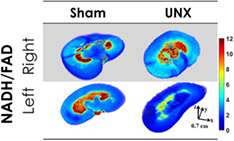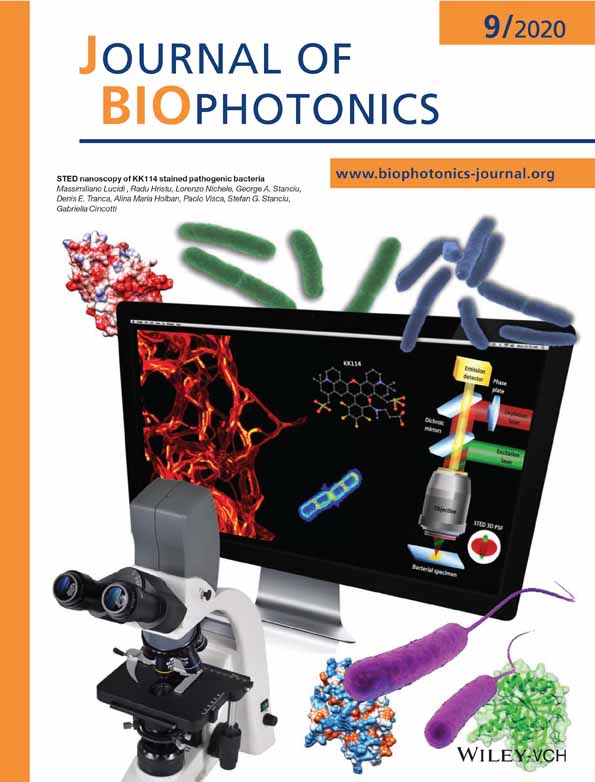The early effects of uninephrectomy on rat kidney metabolic state using optical imaging
Funding information: NIH/NHLBI, Grant/Award Numbers: P01 HL116264, R01 HL137748; University of Wisconsin, Office of Research, Grant/Award Number: RGI 101X371
Abstract
Uninephrectomy (UNX) is known to result in structural and metabolic changes to the remaining kidney, although it is uncertain if this alters the mitochondrial redox state and how soon such changes may occur. A custom-designed fluorescence cryo-imaging technique was used to quantitatively assess the effect of UNX by measuring the levels of nicotinamide adenine dinucleotide (NADH) and flavin adenine dinucleotide (FAD) in the remaining kidney. Kidneys were snap-frozen 3 days following UNX, and the intrinsic fluorescence of NADH and FAD were optically acquired. The 3D images were created to characterize the NADH/FAD redox ratios (RR) of the right kidneys, which underwent UNX and the remaining kidneys 3 days following UNX. Both the NADPH-oxidases (Nox2 and Nox4) and the mitochondria are the main sources of reactive oxygen species (ROS) production in tubular epithelial cells. Responses to the UNX were obtained in kidneys of normal Sprague Dawley (SD) rats, Dahl salt-sensitive (SS) rats and SS rats in which NADPH-oxidase isoform 4 (Nox4) was knocked out (SSNox4−/−). The results found that each of the strains exhibited similar increase in kidney weights averaging 17% after 3 days of UNX. SD and SSNox4−/−rats both exhibited global reductions of the RR (P < .05) with a similar tendency observed in SS rats (P < .08), indicating increased ROS production. The unexpected reduction of the RR in the remnant kidneys of SSNox4−/− rats indicates that mechanisms independent of H2O2 produced from Nox4 may be responsible for this global increase of ROS. We propose that the reduced RR was largely a consequence of enhanced mitochondrial bioenergetics due to increased tubular workload of the remaining kidney. The data indicate that mitochondria become the dominant source of increased ROS following UNX and could represent an important hypertrophic signaling mechanism.




